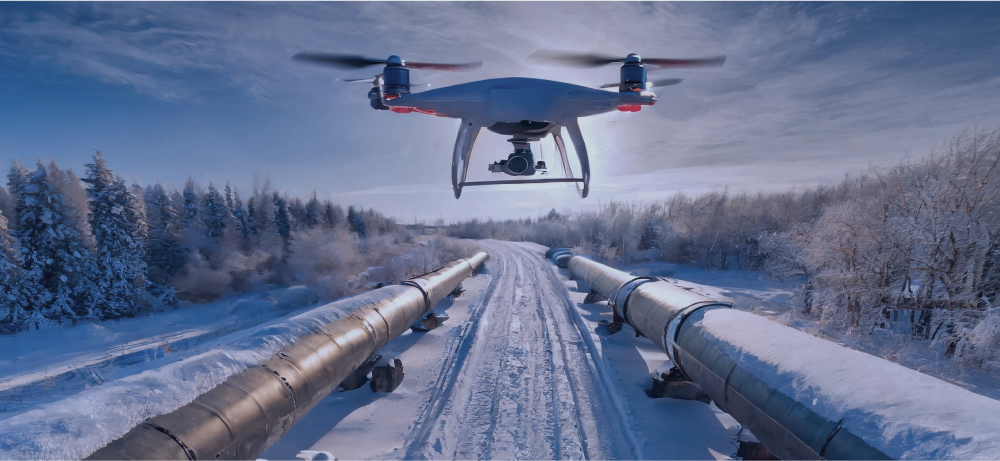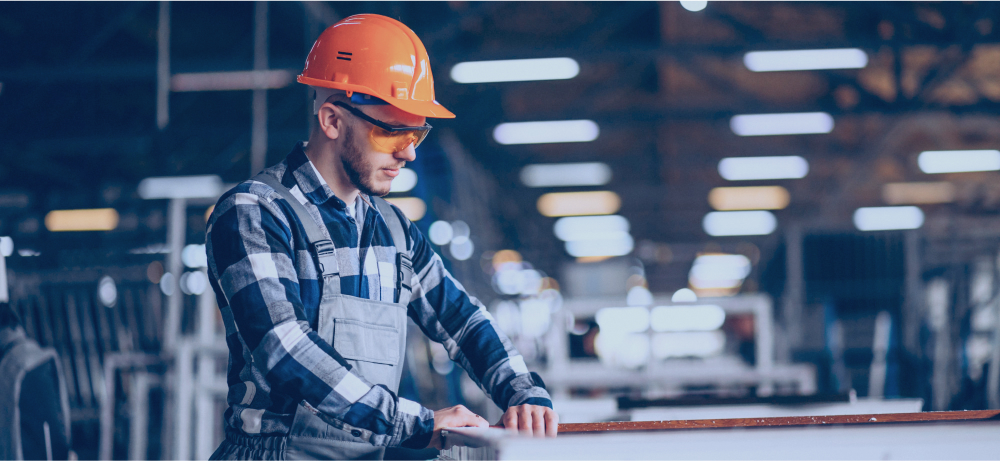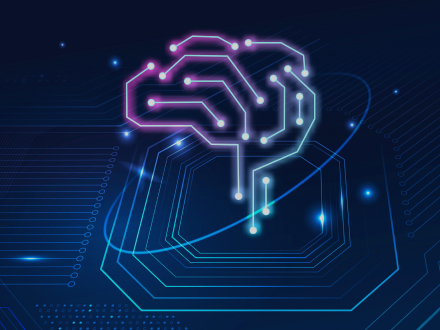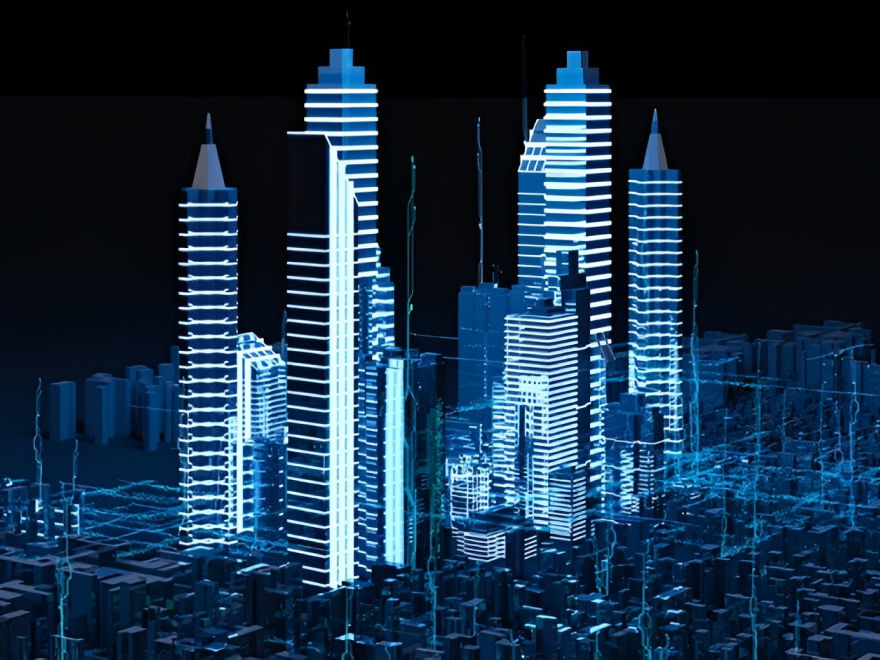Wiadomość została wysłana.
Przetworzymy Twoją prośbę i skontaktujemy się z Tobą tak szybko, jak to możliwe.
Formularz został pomyślnie przesłany.
Więcej informacji można znaleźć w skrzynce pocztowej.


Czy opóźnienia i nieefektywność utrudniają realizację projektu budowlanego? Jak wskazuje raport Research and Markets, Przewiduje się, że do 2028 r. globalny przemysł budowlany osiągnie wartość $12,9 bln, wykazując stałą złożoną roczną stopę wzrostu (CAGR) na poziomie 4,4% w latach 2023-2028. Podkreśla to potrzebę zajęcia się kwestiami produktywności, aby utrzymać ten wzrost i sprostać rosnącym wymaganiom.
Na placach budowy, gdzie chaotyczna koordynacja zadań i nieprzewidywalna praca ciężkich maszyn zdarzają się (spójrzmy prawdzie w oczy), IoT to nie tylko opcja - to konieczność. Obejmuje to maszyny autonomicznie sygnalizujące potrzeby konserwacyjne, drony zapewniające mapowanie terenu na żywo oraz urządzenia do noszenia monitorujące bezpieczeństwo pracowników.
To, co kiedyś było wizją przyszłości, teraz jest namacalną rzeczywistością, modyfikującą operacje na placu budowy dzięki zwiększonej wydajności i środkom bezpieczeństwa.
Internet rzeczy w budownictwie odnosi się do integracji połączonych ze sobą urządzeń, czujników i sprzętu na placach budowy w celu gromadzenia i wymiany danych. Urządzenia te mogą obejmować wszystko, od maszyn i narzędzi po urządzenia ubieralne i drony.
Łącząc dane z różnych źródeł, IoT umożliwia natychmiastowe monitorowanie wydajności sprzętu, wczesne wykrywanie problemów związanych z konserwacją i usprawnianie przepływów pracy. Rozwiązania oparte na IoT zwiększają bezpieczeństwo poprzez ciągłą kontrolę warunków środowiskowych i zdrowia pracowników, minimalizując w ten sposób potencjalne ryzyko. Wreszcie, co nie mniej ważne, IoT pomaga lepiej zarządzać zasobami, oszczędzać pieniądze i utrzymywać projekty zgodnie z harmonogramem i budżetem, spełniając jednocześnie standardy jakości.
"Dzięki IoT w budownictwie możemy pomóc, monitorując wydajność maszyn, śledząc zużycie materiałów i wykrywając problemy, zanim wymkną się spod kontroli. Oznacza to mniej kosztownych przestojów i płynniejszy postęp projektu. Ostatecznie gwarantujemy naszym klientom wydajniejszą realizację projektów, oszczędność pieniędzy i najlepsze wyniki".

Nazarevich Dmitry
Dyrektor ds. technologii w Innowise
Wyobraź sobie czujniki wbudowane w maszyny i narzędzia, które stale przesyłają dane o ich stanie i wykorzystaniu. System może ostrzegać o wszelkich nieprawidłowościach, zapobiegać nieoczekiwanym awariom i optymalizować alokację zasobów - obniżając koszty.

Jedną z najciekawszych funkcji IoT w budownictwie jest konserwacja predykcyjna. Zamiast czekać, aż coś się zepsuje, zaawansowane systemy IoT stale analizują dane ze sprzętu, aby dokładnie przewidzieć, kiedy konieczna będzie konserwacja.

IoT może monitorować stan zdrowia pracowników i warunki pracy, aby uniknąć zmęczenia i zminimalizować ryzyko wypadków. Co więcej, biuro wyposażone w IoT może zmniejszyć liczbę przypadków, w których pracownik nie jest w pracy, zapewniając wgląd w warunki pracy i czynniki zdrowotne.

Bieżące dane wyjściowe z czujników pozwalają zespołom monitorować zużycie energii przez sprzęt i znajdować sposoby na ograniczenie marnotrawstwa. IoT pomaga również zintegrować odnawialne źródła energii, takie jak panele słoneczne i automatyzuje zadania, takie jak regulacja oświetlenia i wyłączanie nieużywanych maszyn.

Miejsca te stają się centrami danych, z czujnikami i urządzeniami stale dostarczającymi informacji w czasie rzeczywistym na temat wszystkiego, od działania maszyn po warunki pracy pracowników. Inteligentne place budowy działają jak złożone ekosystemy, w których wzajemne oddziaływanie połączonych danych napędza precyzję i wydajność.

Wyobraź sobie czujniki wbudowane w maszyny i narzędzia, które stale przesyłają dane o ich stanie i wykorzystaniu. System może ostrzegać o wszelkich nieprawidłowościach, zapobiegać nieoczekiwanym awariom i optymalizować alokację zasobów - obniżając koszty.

Jedną z najciekawszych funkcji IoT w budownictwie jest konserwacja predykcyjna. Zamiast czekać, aż coś się zepsuje, zaawansowane systemy IoT stale analizują dane ze sprzętu, aby dokładnie przewidzieć, kiedy konieczna będzie konserwacja.

IoT może monitorować stan zdrowia pracowników i warunki pracy, aby uniknąć zmęczenia i zminimalizować ryzyko wypadków. Co więcej, biuro wyposażone w IoT może zmniejszyć liczbę przypadków, w których pracownik nie jest w pracy, zapewniając wgląd w warunki pracy i czynniki zdrowotne.

Bieżące dane wyjściowe z czujników pozwalają zespołom monitorować zużycie energii przez sprzęt i znajdować sposoby na ograniczenie marnotrawstwa. IoT pomaga również zintegrować odnawialne źródła energii, takie jak panele słoneczne i automatyzuje zadania, takie jak regulacja oświetlenia i wyłączanie nieużywanych maszyn.

Miejsca te stają się centrami danych, z czujnikami i urządzeniami stale dostarczającymi informacji w czasie rzeczywistym na temat wszystkiego, od działania maszyn po warunki pracy pracowników. Inteligentne place budowy działają jak złożone ekosystemy, w których wzajemne oddziaływanie połączonych danych napędza precyzję i wydajność.

Komatsu jest głównym graczem w świecie sprzętu budowlanego i górniczego, znanym z wprowadzania najnowocześniejszych technologii, które sprawiają, że miejsca pracy są bardziej wydajne i produktywne.
Inteligentna krawędź konstrukcyjna Komatsu to przełom w geodezji dronowej. Urządzenie to przekształca loty dronów w szczegółowe chmury punktów, tworząc precyzyjne cyfrowe mapy placów budowy. We współpracy z Sony i NTT Communications, najnowsza wersja Edge wykorzystuje sztuczną inteligencję do automatycznego usuwania przeszkód, przyspieszając proces i zapewniając dokładne mapy 3D do śledzenia postępów i pomiaru objętości na Smart Construction Dashboard.
To wdrożenie naprawdę dowodzi, że innowacje Komatsu robią wielką furorę. Ich nowa technologia rewolucjonizuje pomiary dronem, czyniąc place budowy bardziej produktywnymi i bezpieczniejszymi niż kiedykolwiek.

Dział Innowacji firmy Turner nawiązał współpracę z Versatile, czołowym start-upem w dziedzinie technologii budowlanych, w celu poprawy wydajności dźwigów z wykorzystaniem IoT i sztucznej inteligencji.
System CraneView™ firmy Versatile, wyposażony w czujnik IoT zamontowany na haku żurawia, rejestruje i analizuje dane dotyczące przepływu materiałów, tempa produkcji i wykorzystania żurawia. Kamera rejestruje aktywność żurawia, zapewniając podgląd na żywo i sekwencje podnoszenia. Technologia AI klasyfikuje przedmioty, mierzy wagę i śledzi cykle podnoszenia, oferując szczegółowe informacje za pośrednictwem internetowego i mobilnego pulpitu nawigacyjnego.
Dane te usprawniają planowanie i harmonogramowanie budowy, zwiększają produktywność i poprawiają bezpieczeństwo poprzez identyfikację i korygowanie niebezpiecznych zachowań wśród pracowników budowy.

Zacznij wdrażać IoT już dziś.
Połączenie IoT, sztucznej inteligencji i uczenia maszynowego zamienia góry danych we wczesne ostrzeżenia o potencjalnych problemach, jednocześnie optymalizując wykorzystanie zasobów i sprawiając, że projekty przebiegają sprawniej niż kiedykolwiek. Przykładowo, drony i kamery oparte na sztucznej inteligencji są wykorzystywane na placach budowy do rejestrowania obrazów i filmów w czasie rzeczywistym. Sztuczna inteligencja analizuje te dane w celu śledzenia postępów, wykrywania zagrożeń bezpieczeństwa i generowania natychmiastowych alertów. A to dopiero początek - te postępy nabierają tempa, obiecując jeszcze bardziej inteligentne i wydajne place budowy w najbliższej przyszłości.
Te dynamiczne modele zapewniają kompleksowy widok projektu budowlanego, umożliwiając monitorowanie warunków i wydajności na żywo. Gdy czujniki zbierają dane na temat integralności strukturalnej, temperatury i wilgotności, cyfrowy bliźniak aktualizuje się, aby odzwierciedlić te zmiany, zapewniając aktualną reprezentację terenu. Ten stały przepływ danych umożliwia szczegółowe symulacje procesów budowlanych, pomagając zespołom testować scenariusze i optymalizować plany przed ich faktycznym wdrożeniem.
Łączność 5G przesyła dane z czujników IoT, dronów i kamer z minimalnym opóźnieniem. 5G ułatwia precyzyjne zdalne sterowanie autonomicznymi maszynami, takimi jak roboty wykopowe, i obsługuje zaawansowane narzędzia AR i VR do dogłębnych ocen projektowych i ocen na miejscu. Ponadto przenosi współpracę zespołową na wyższy poziom dzięki wysokiej jakości wideokonferencjom i nieprzerwanej komunikacji w różnych lokalizacjach.
Przyjęcie rozwiązań IoT do monitorowania środowiska dostosowanych do placów budowy zapewnia dane w czasie rzeczywistym na temat poziomu zapylenia, hałasu i wibracji. Rozwiązania te są modułowe, przenośne i można je dostosować do konkretnych wymagań projektu. Urządzenia IoT mogą wykrywać przypadki, w których maszyny zużywają paliwo na biegu jałowym lub operatorzy zużywają więcej paliwa niż zwykle, umożliwiając podjęcie działań naprawczych. Dane z czujników mogą również dostosowywać poziomy oświetlenia na miejscu po godzinach pracy, oszczędzając energię.
Drony w połączeniu z technologią IoT staną się wielkim hitem w branży budowlanej. Zmieniają one sposób, w jaki monitorujemy place budowy, dostarczając dane w czasie rzeczywistym i szczegółowe obrazy, a wszystko to wysyłane bezpośrednio do systemów IoT. Technologia ta pomaga zespołom śledzić postępy, szybko rozwiązywać problemy i podejmować mądrzejsze decyzje. Ponieważ coraz więcej projektów budowlanych ma na celu usprawnienie operacji i zwiększenie wydajności, drony z pewnością zyskają na popularności i staną się niezbędnym narzędziem na placach budowy.
Od zwiększania bezpieczeństwa pracowników za pomocą urządzeń do noszenia po optymalizację operacji na placu budowy za pomocą inteligentnych czujników, wpływ IoT w budownictwie jest nie tylko na horyzoncie - dzieje się to już teraz. Jeśli nie korzystasz z rozwiązań IoT, tracisz szansę na zwiększenie wydajności, oszczędności i zrównoważonego rozwoju.
IoT monitoruje place budowy w czasie rzeczywistym, śledzi sprzęt i racjonalnie zarządza zasobami, takimi jak energia i woda. Czujniki i kamery pomagają nadzorować postępy i produktywność pracowników, a drony zapewniają widoki z lotu ptaka na potrzeby planowania. IoT przewiduje również potrzeby konserwacyjne, redukując przestoje i koszty. Ogólnie rzecz biorąc, dzięki temu budownictwo staje się bezpieczniejsze, bardziej opłacalne i zrównoważone.
Oszczędnościowy wpływ IoT na budownictwo jest zakotwiczony w czujnikach, które zbierają dane w czasie rzeczywistym na temat różnych elementów. Urządzenia te umożliwiają konserwację predykcyjną, monitorowanie środowiska oraz śledzenie maszyn, narzędzi i materiałów w celu zminimalizowania przestojów i zapobiegania kradzieżom. Prognozują potrzeby konserwacyjne, ograniczają nagłe awarie i maksymalizują produktywność, aby zmniejszyć zużycie zasobów i koszty szkód.
Urządzenia IoT generują obszerne dane, które powinny być bezpiecznie przesyłane, przechowywane i analizowane. Środki takie jak szyfrowanie end-to-end, silne uwierzytelnianie i regularne aktualizacje oprogramowania układowego są obowiązkowe w celu ochrony przed lukami w zabezpieczeniach i nieautoryzowanym dostępem. Stawiając czoła tym wyzwaniom, branża budowlana może w pełni wykorzystać połączone technologie, jednocześnie dbając o bezpieczeństwo danych.
Place budowy mogą mieć duży wpływ na otoczenie, ale systemy monitorowania środowiska IoT zapewniają inteligentny sposób na zmniejszenie tych skutków. Czujniki na żywo mogą mierzyć różne parametry ekologiczne, takie jak jakość powietrza, poziom hałasu i cząsteczki pyłu, dostarczając cennych danych do zarządzania wpływem na środowisko. Dzięki zastosowaniu tej technologii place budowy są zgodne z przepisami i wspierają zrównoważone praktyki.
Wielkość rynku dla IoT w budownictwie ma osiągnąć wartość 33,04 mld USD do 2030 roku. Te spostrzeżenia sugerują obiecującą trajektorię dla branży, napędzaną postępem w technologii IoT i rosnącym popytem na rozwiązania cyfrowe w praktykach budowlanych.













Wiadomość została wysłana.
Przetworzymy Twoją prośbę i skontaktujemy się z Tobą tak szybko, jak to możliwe.

Rejestrując się, wyrażasz zgodę na naszą Polityką Prywatności, w tym korzystanie z plików cookie i przekazywanie Twoich danych osobowych.